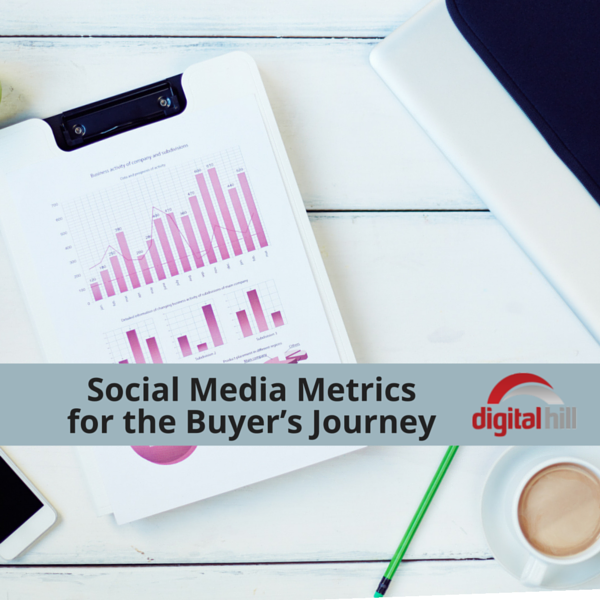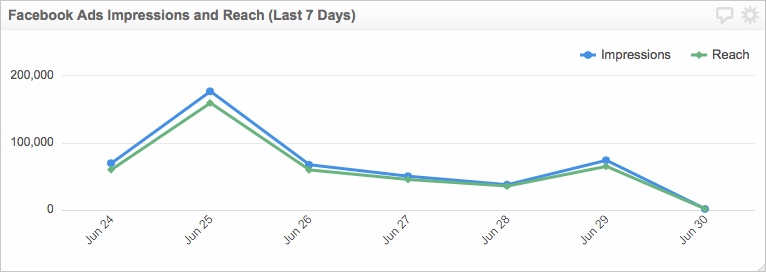Social Media Metrics for the Buyer’s Journey

It’s called the “buyer’s journey” and it’s made up of the steps it takes for someone to actually buy a product or service. The buyer’s journey is made up of five distinct stages: awareness, consideration, decision, adoption, and advocacy. Each stage comes with its corresponding objective, and each should have a unique social media strategy.
For many marketers, identifying that objective and forming a strategy to achieve it is fairly straightforward. The key, however, is figuring out the metrics to be used to measure success in each area. There are too many metrics out there, and it’s best to whittle them down to an essential few. Here’s my recommendation for metrics to track:
For many marketers, identifying that objective and forming a strategy to achieve it is fairly straightforward. The key, however, is figuring out the metrics to be used to measure success in each area. There are too many metrics out there, and it’s best to whittle them down to an essential few. Here’s my recommendation for metrics to track:
-
Awareness
Your first goal is to let prospective customers know that your brand exists. One way to do this is to expose them to brand content. Activity metrics include posts on your brand’s social media timelines and paid boosts for better traction.

To measure success, look at the statistics for impressions and reach. The higher the impressions, the more people saw your posts. The higher the reach, the wider the network your posts got exposed to. In terms of business impact, check Share of Voice (SoV) and Top of Mind Awareness (ToMA).
SoV measures how much your brand is talked about compared to competitors while ToMA measures how often your brand comes first to people’s minds when they think of the industry it belongs to. Awareness is not sales, but you have to be found first in order for someone to eventually buy so you need to track how you are getting your business “out there” on social media.
-
Consideration
Create demand for your brand by generating engagement with your target audience through brand content. Again, use posts to achieve this, but take it further with responses to people’s comments. Engagement is a two-way street, so keep discussions going. To measure success, look at the number of engagements and the types of engagements.
How many comments did your posts get? How many shares, how many likes? Finally, check the visitor count for your business (online and if applicable, offline as well). If there is an increase in web traffic coming direct from social media, then your social media marketing activities are being effective.
-
Decision
Leads don’t mean anything if they don’t ultimately become sales conversions. Drive conversions by directing your target audience to specific offers. You can do this through posts and promotions people would find hard to resist. Key performance indicators (KPI’s) for these activities are link clicks on your social media shares — if people clicked, it means they’re serious about buying, signing up, availing a trial, or whatever it is you want them to do.
Determine the impact on your business by counting conversions, which can include purchases, subscriptions, downloads, etc. You can implement tracking on your links so that you could track a social media share all the way through to a purchase made on your site or a form filled out.
-
Adoption
You finally got the customers, but you want them to stick around for repeat sales. The best strategy for this goal is to delight them with post-sale customer care. On social media, you can do this by driving engagement with your brand’s products or services.
Responses to questions and complaints online are crucial for social customer care, and you can measure them through response time, response quantity, and positive earned mentions from customers. The business impact of great customer service is high satisfaction and good sentiment.
-
Advocacy
The last target is to make repeat customers advocates for your brand.
Inspire evangelism and your brand will organically grow through recommendations. Do you have happy customers willing to give you a review or testimonial, or to post to your social media accounts? Get better and wider-reaching results by tapping customer influencers through posts, reshares, and active outreach. Measure the success of these activities with earned impressions and earned reach created by social sharing, media coverage, or any other third-party involvement.
You can also measure it with social user-generated content (UGC), or content created not by your brand but by other people. The business impact of these KPI’s are: referrals, influencer activity, positive word of mouth, and net promoter score (NPS). A gauge for customer loyalty, NPS is a 1-100 index to measure customers’ willingness to recommend a brand’s products or services to others.
By watching and measuring these key metrics you’ll have a better understanding of who visits your site and what they do once they get there. Many metrics can be found in each social media site.
Facebook for instance, has great metrics for many of these in their Page Insights area. Twitter also offers some stats and many third-party tools like Hootsuite, AgoraPulse, and Buffer also offer deeper analytics that help you get started well on measuring your social media.